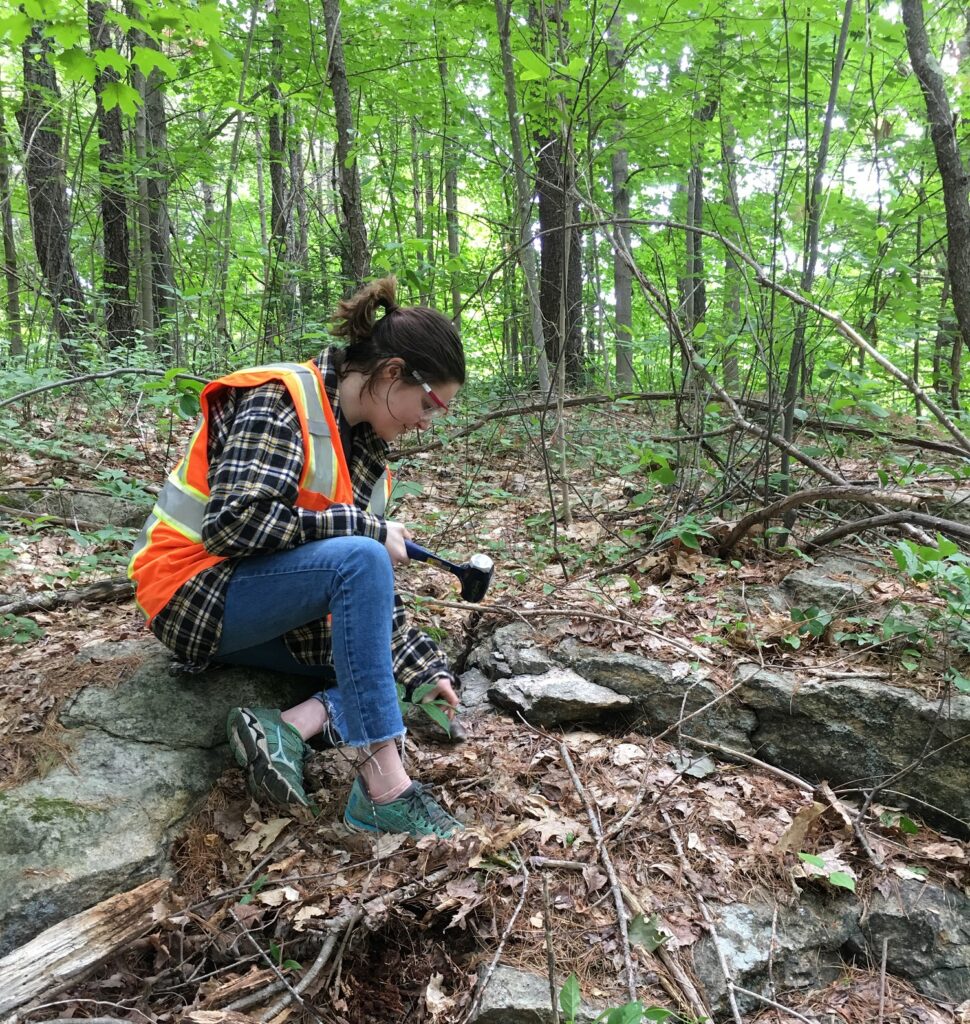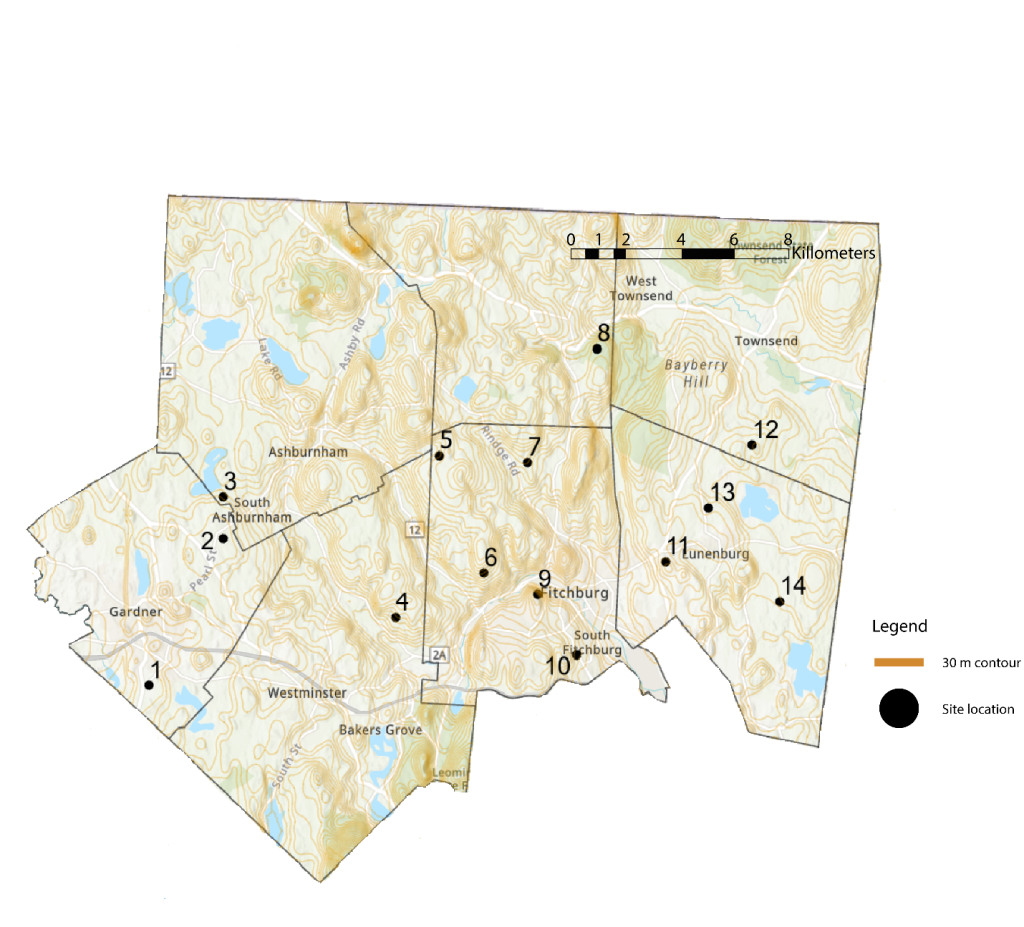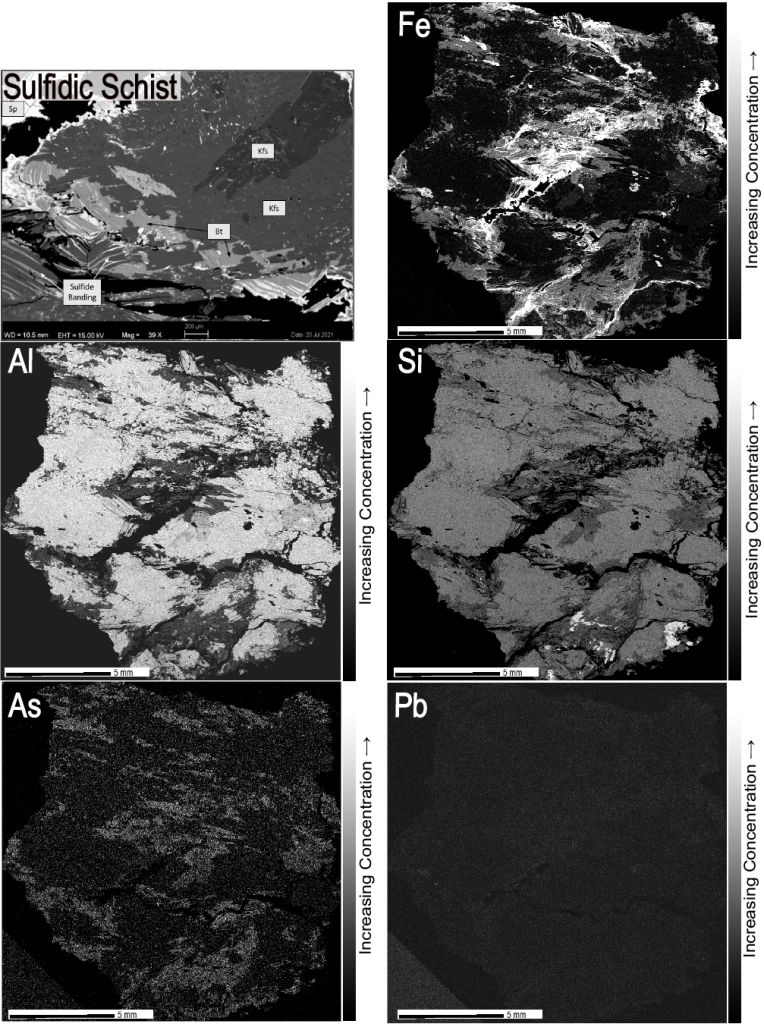A big congratulations to Stephanie Thrasher on completing her senior thesis:
“Leaching of trace metals from sulfidic schists and other rock formations in Central Massachusetts”
The field work and laboratory analyses were challenging to complete on time and with all of the detail required but Stephanie did it!
A copy of the abstract is below:
“Sulfidic schists and other rock units can be sources of toxic trace metals such as copper (Cu), lead (Pb), and arsenic (As) in Central Massachusetts. These trace metals are released into the environment when the rock units are weathered and oxidized. At certain concentrations these trace metals are toxic when in soils, ground, or surface waters. In this study I tried to discover if sulfidic schists rock units in the Fitchburg area contain high concentrations of trace metals. This was accomplished using imaging by Scanning Electron Microscope (SEM), Electron Microprobe, and total element analysis by ICP-MS. I also examined how these rock units weather and the rate at which trace metals leach out using a series of batch reactors. Since trace metals leach out of the rock units and into surrounding soils, I took soil samples at multiple depths at the sites along with the rock samples. These would tell what the source of the trace metals were, the rock outcrops or other human sources. It was found that sulfidic schists were the only outcrops that contained high concentrations of trace metals as expected. This indicates that these rock units are not significant sources of trace metals in the environment. The rock units leached out more of each trace metal at higher pH and reducing conditions. This was different from what was originally thought as previous studies found that sulfidic schists leached out more trace metals under lower pH conditions. There were little to no trace metals found in the soils which means mine waste is not a source of trace metals in Central Massachusetts. “


